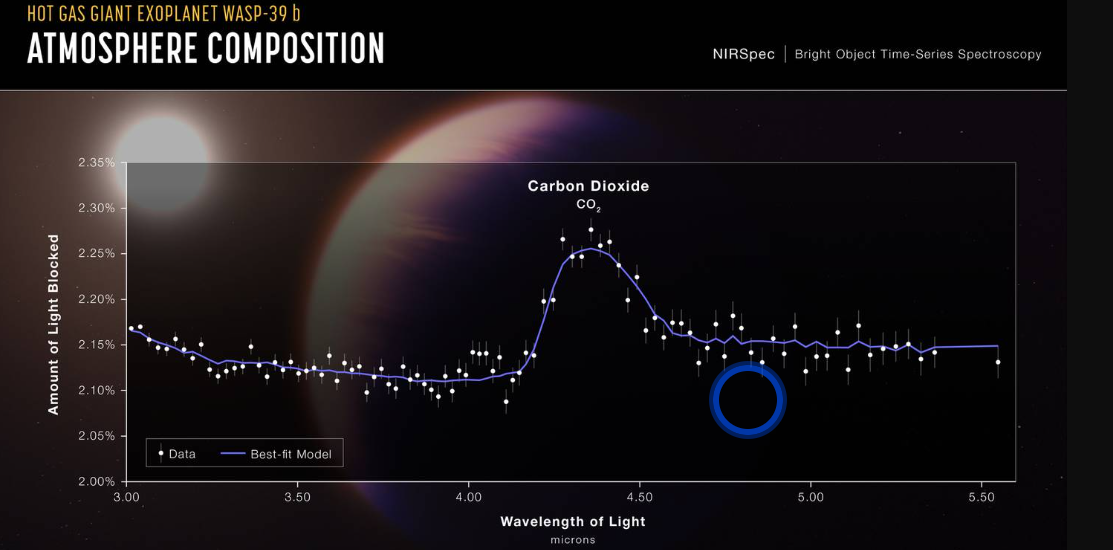
UAE: Jasmina Blasik was part of the team using NASA telescope data to detect carbon dioxide in the atmosphere of a planet named Wasp-39b.
A scientist at New York University Abu Dhabi is part of a team of researchers who have discovered the first example of the presence of carbon dioxide on a planet outside the Solar System. which is a big deal
Let us tell you that Jasmina Blasick has co-authored an unprecedented new study that shows that the gas is present in the atmosphere of Wasp-39b, a giant planet orbiting a star 700 light-years away from Earth. does.

These scientists used information from NASA’s James Webb Space Telescope to draw their conclusions about Wasp-39b, the first exoplanet — a planet orbiting a star outside the Solar System — where carbon dioxide has been detected.
For your information, let us tell you that Dr. Blasick of NYUAD’s Center for Astro, Particle and Planetary Physics said that the telescope is providing information over and above what has been obtained by other major telescopes including Hubble and Spitzer Space Telescopes.
“This was a major excitement for the whole community. We’ve seen something that we didn’t see before,”
“We didn’t know whether the [James Webb Space Telescope] would be sensitive enough to see something that we couldn’t see with Spitzer or Hubble.
You will know here, A year in four days
Described by Nasa as a hot gas giant, Wasp-39b has a temperature of about 900°C and a diameter well over 10 times that of Earth.
Wasp-39b shows what Nasa calls “extreme puffiness” in its structure, but despite its diffuse nature, it sticks much closer to its star than any planets in our solar system.
It orbits its star one eighth of the distance that Mercury does to the Sun and completes a circuit in a little more than four Earth days.

“It’s the first time that we’ve actually detected CO2 outside of our own solar system,” said the professor, whose centre is involved in analysing data of the kind produced by the James Webb Space Telescope.
“It’s the first of what will be many, many detections in the coming years. It’s a big planet, it’s almost certainly not going to have life.
“But it shows we can detect CO2 readily. When we start to detect it in planets that are Earth-sized or Mars-sized, it becomes more interesting.”
Wasp-39b’s orbit is observed edge-on rather than from above, so researchers can look at how its atmosphere absorbs light from its star.
The gases in a planet’s atmosphere absorb different wavelengths or colours of light to particular extents, so determining how much light of certain wavelengths passes through indicates the composition of the atmosphere.
“I’m thoroughly involved as new data comes, so I will be really busy in the next six months,” said Dr Blecic.
She hopes the telescope, launched in December last year, will provide data for at least the next 15 years, well beyond the stated mission duration, helping astrophysicists gain a much greater understanding of the universe.
Read Also: Latest Gold Rate in Bahrain(Bahraini Dinar) in Bahraini Dinar, 24 Aug 2022


